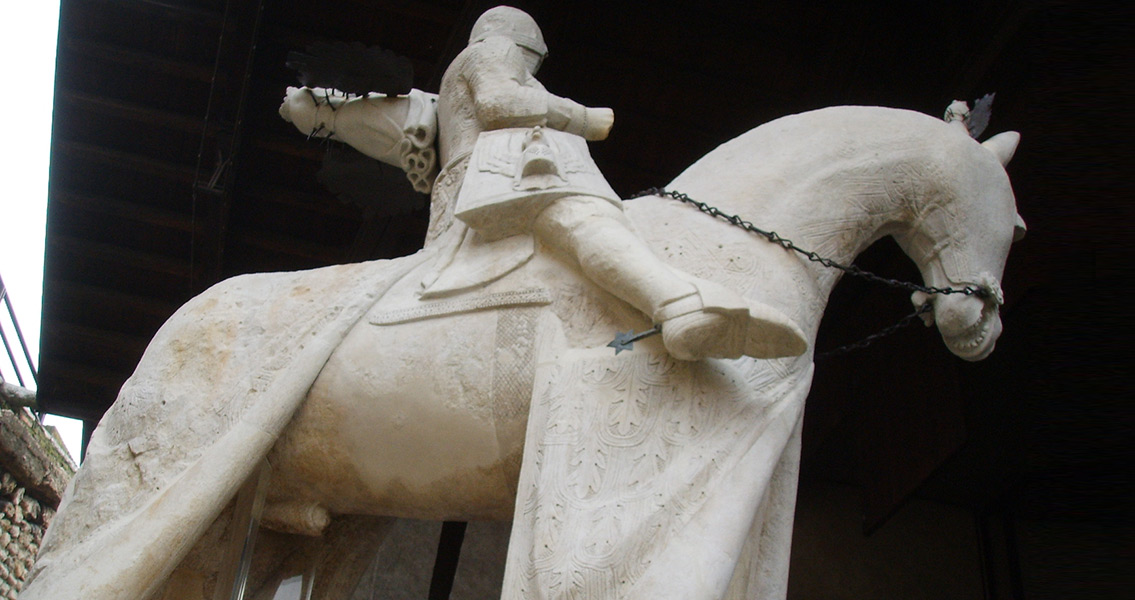<![CDATA[By analysing mummified faecal matter, researchers have discovered a medieval warlord was poisoned. Cangrande della Scala was an Italian nobleman, the most famous member of the della Scala family who ruled Verona during the fourteenth century. Nowadays, Cangrande is best known as one of Dante Aligheri’s patrons - part of The Divine Comedy is dedicated to him. In the fourteenth century however, he was renowned as a formidable warrior and autocrat. After becoming sole ruler of Verona in 1311, Cangrande conquered several neighbouring cities, namely Vicenza, Padua and Treviso. Cangrande entered Treviso, after a brief siege, on the 18th July 1329. The victory was the crowning moment of his lengthy campaign to master the Trevisan Mark. After this conquest, Cangrande’s health deteriorated rapidly, and his sudden death on 22nd July 1329 has been the subject of controversy ever since. Contemporary accounts claimed that he had been taken ill as a result of drinking contaminated water a few days before marching into Treviso. “He became sick with vomit and diarrhea just a few days after winning control over the city of Treviso,” Gino Fornaciari, Professor of History of Medicine and Palaeopathology at the University of Pisa, told Discovery News. Rumours of poisoning immediately began to circulate, because Cangrande had been regarded as a particularly fit individual. Years of military campaigning had given him considerable physical strength and endurance. Fornaciari and his team of researchers have been analysing Cangrande’s remains in an attempt to ascertain more information about the mysterious cause of his death. In 2004, Cangrande’s body was exhumed from its marble tomb in the church of Santa Maria Antica, Verona. His body was discovered to have been mummified by entirely natural processes, and X-ray and CT scans showed all his organs were in remarkable condition. These scans also revealed the presence of regurgitated food in Cangrande’s throat, and evidence of tuberculosis and cirrhosis. Fornaciari has now publicised the latest information about his team’s research. Abdominal scans revealed the presence of faecal matter in the rectum, allowing Fornaciari to extract samples. Analyses of these samples have revealed some surprising results. Alongside grains of chamomile, used as a sedative, and black mulberry, used as an astringent, were traces of foxglove. “Although it is not possible to rule out totally an accidental intoxication, the most likely hypothesis is that of a deliberate administration of a lethal amount of Digitalis,” Fornaciari and his colleagues have concluded. It appears, therefore, that Cangrande was poisoned. He certainly had his enemies, particularly in neighbouring states which were worried by his growing power, such as the Republic of Venice and the Ducate of Milan. Cangrande also had rivals much closer to home. As he had no legitimate sons, Cangrande’s titles and land passed to his nephews, Mastino and Alberto della Scala. Fornaciari notes that soon after Cangrande’s death, one of his physicians was hanged by the ambitious nephew Mastino. “It could have well been Mastino II himself [who killed Cangrande],” Fornaciari said. In concluding his recent statements, Fornaciari noted the importance of his team’s research: “[our work] adds more weight to the possibility that foul play was at least suspected [in Cangrande’s death], although who was ultimately behind the killing is likely to remain a mystery.” Fornaciari’s analysis is particularly fascinating as it allows us a greater understanding of a mysterious political scandal. We are possibly one step closer to solving a real medieval whodunnit. Image courtesy of Wikimedia commons user: sailko ]]>
Mummified Faeces Solves 700 Year Old Murder
